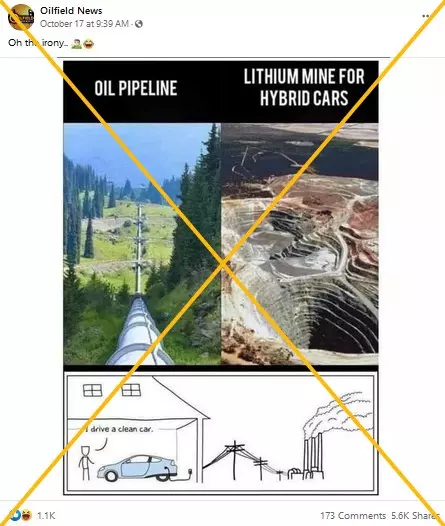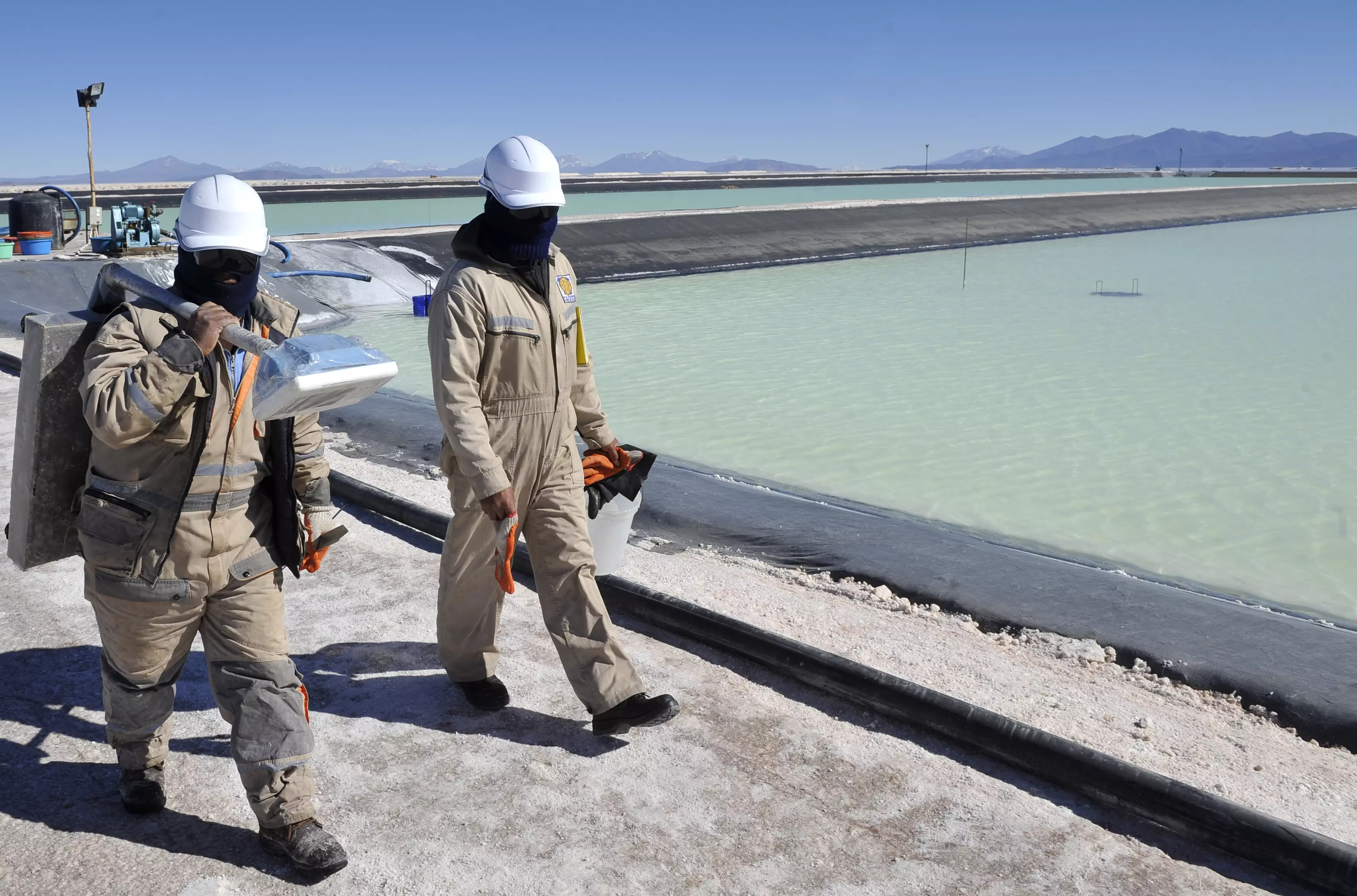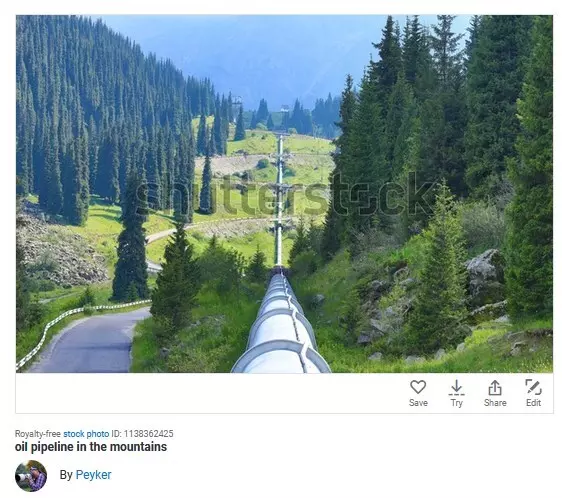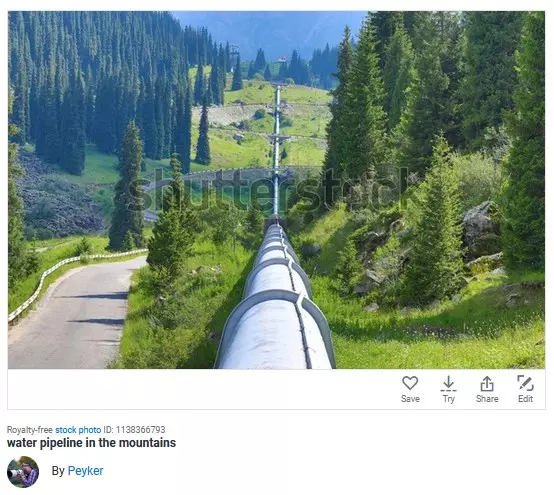A photo collage circulating on Facebook claims to show a large open lithium mine "for hybrid cars," contrasting it with an image of an oil pipeline running through a forest landscape and suggesting that such vehicles are not clean. But hybrid and electric cars generally have a smaller carbon footprint than those powered by gasoline, and the posts picture a gold rather than a lithium mine.
"Oh the irony," says text accompanying the collage in an October 17, 2021 Facebook post.
 Screenshot of a Facebook post taken on October 20, 2021
Screenshot of a Facebook post taken on October 20, 2021 The same images appeared on Facebook here, here, and here.
The posts follow a Canadian government announcement that all cars and passenger trucks sold in the country will have to be zero-emission by 2035 as part of its commitment to reach net-zero greenhouse gases (GHG) emissions by 2050.
A cartoon included in the collage implies that an electric car or plug-in hybrid car is not "clean" because it is charged using power from fossil fuels, which release GHG into the atmosphere, thus contributing to global warming.
This is misleading.
In general, cars using electricity as a fuel have a lower carbon footprint than gasoline-powered cars.
But reductions in emissions compared to conventional vehicles will vary depending on the type of car and type of driving, as well as whether a country is more reliant on fossil fuels such as coal than on renewable energies such as solar or hydroelectricity.
There are three main types of cars using electricity as a fuel: fully electric, hybrid, which uses both an internal combustion engine and a battery, and plug-in hybrid, which also allows the user to plug the car into a power source to recharge the battery.
Similarly, there are three steps during which greenhouse gases are emitted by these cars: manufacturing, distributing electricity, and driving.
While manufacturing a hybrid car does require more energy than a gasoline-powered vehicle, it is offset in the long term by lower emissions.
The US Department of Energy states that "hybrid electric vehicles (HEVs), plug-in hybrid electric vehicles (PHEVs), and all-electric vehicles (EVs) typically produce lower tailpipe emissions than conventional vehicles do."
But the lifetime emissions of such a car will vary depending on the energy mix of the area where it is used.
"In geographic areas that use relatively low-polluting energy sources for electricity generation, PHEVs and EVs typically have lower emissions well-to-wheel than similar conventional vehicles running on gasoline or diesel. In regions that depend heavily on coal for electricity generation, PEVs may not demonstrate a strong well-to-wheel emissions benefit," the department says.
The Canadian government provides a breakdown of CO2 emissions by vehicle and province here. For example, a hybrid vehicle is the best performer in a province with a fossil-fuel heavy power grid such as Alberta, but driving an electric car in a province running mostly on renewable energy such as Quebec emits almost no CO2.
The US Environment Protection Agency (EPA) says on its website that "electric vehicles typically have a smaller carbon footprint than gasoline cars, even when accounting for the electricity used for charging."
"The greenhouse gas emissions associated with an electric vehicle over its lifetime are typically lower than those from an average gasoline-powered vehicle, even when accounting for manufacturing," the EPA says.
Misleading photos
A reverse image search for the photo said to show a lithium mine leads to the website of Australian company Minjar Gold, revealing that it is actually of a gold mine in Australia.
Scrolling down leads to photos of the company's mining projects. The picture used in the posts appears under the third item, Barto Gold Mining.
The website indicates that the mining site is located around Marvel Loch. Searching for it on Google Maps leads to the gold mining site in Australia.
Lithium mining is not an impact-free industry, but large open mines do not accurately reflect the way most lithium is extracted.
According to this 2018 study, about two thirds of the world's lithium production is extracted from brine, in a chemically intensive process that evaporates on average half a million liters of brine per ton of lithium carbonate. Much of the world's lithium production comes from brine pools that look like the one in Bolivia pictured below.
 Employees work at a brine pool in the world's largest salt flat of Uyuni in Bolivia on July 14, 2011 ( AFP / Aizar Raldes)
Employees work at a brine pool in the world's largest salt flat of Uyuni in Bolivia on July 14, 2011 ( AFP / Aizar Raldes) AFP Fact Check reported on a similar misleading claim about lithium mining in 2019.
A reverse image search for the photo of the pipeline reveals it has been cropped from a picture posted on a stock photo website.
The pipeline was separately labeled as carrying oil and water by a person whose profile says he is located in Kazakhstan. The same account also uploaded a similar picture taken in winter, describing it as water pipeline and identifying it as being shot near Big Almaty Lake.
 Screenshot taken on October 20, 2021 of a picture on Shutterstock
Screenshot taken on October 20, 2021 of a picture on Shutterstock  Screenshot taken on October 21, 2021 of picture on Shutterstock
Screenshot taken on October 21, 2021 of picture on Shutterstock
The caption of another photo taken in the same area says: "A large pipeline transports fresh water from Big Almaty Lake reservoir, through the Tien Shan Mountains into the southern city of Almaty, Kazakhstan."
And a local tourism website describes the lake as "the main source of drinking water in Almaty" and says that "there is a special water pipeline built from the lake to the city."
The lake and pipeline can be seen on Google Maps. According to a map from the US Energy Information Administration, there are no major oil pipelines near Almaty.
(Except for the headline, this story has not been edited by BOOM staff and is published from a syndicated feed.)